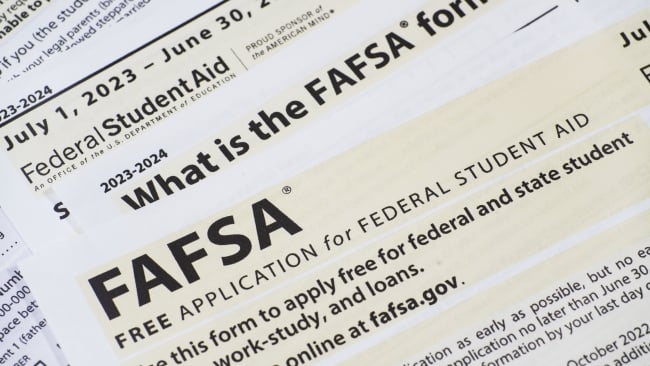You have /5 articles left.
Sign up for a free account or log in.

Richard Stephen/iStock/Getty Images Plus
Much has been written about all that has gone wrong with the updated Free Application for Federal Student Aid (FAFSA) form. While it will certainly be important to review this year’s process to ensure that future years are easier for students and families to navigate, there is still a lot of work to be done in the coming months to get as many FAFSAs completed as possible. Recent data shows that only about 5.8 million young people have submitted their form so far this year, while an average of 17 million have done so in recent years. These numbers are stark but don’t necessarily convey the human costs. Struggling families trying to help their children attend college face enough challenges and their problems have only gotten worse in the past few months. We need to dedicate as many resources and as much energy as possible to getting college-aged students to complete their FAFSA forms.
While those of us steeped in this work intuitively understand the critical importance of the FAFSA to students from low- and moderate-income families, we need to be able to communicate that importance to those with everyday pressures and commitments that make college seem like a very distant possibility. FAFSA is the key to need-based aid, both from institutions themselves and from the federal government, including critical Pell Grants. Many of this generation of young people will have experienced remote learning during the pandemic, which may have caused still-unknown consequences to their educations and their social and emotional development. We owe them everything we can to support them in reaching their higher education goals.
Institutions of higher education depend on FAFSA information from the federal government to complete financial aid packages for prospective students, so there is additional incentive for us to make as many resources and services available to assist students and families as possible. Here at Pace University, for example, we’ve created a dedicated webpage for information regarding the updated FAFSA process. It includes basic information and instructions, an FAQ, and specific guidance for complicated situations. After learning of common errors and misconceptions that were shared by several students and families, we created a video presentation to assist those struggling with the process.
Finally, we’ve extended many of the internal deadlines regarding student aid and FAFSA submissions to give students and their families as much time as possible to have all information available to them when making important decisions. This includes the deadline for qualifying for a $1,500 recurring scholarship we’re offering incoming freshmen just for submitting their FAFSA, a benefit that we have found to be incredibly effective at encouraging FAFSA completion. While originally February 15, Pace initially extended this deadline to March, and recently did so again to April. As long as the timelines we receive from the federal government continue to evolve, we must be equally flexible with our own deadlines. These are just some of the creative tools institutions of higher education can use to do our part to support our prospective and current students.
Government also has a very important role to play in this process, and not just the federal Department of Education. Here in New York State, Governor Kathy Hochul has proposed legislation to encourage FAFSA completion by requiring school districts to obtain documentation that high school seniors have either completed a FAFSA or have waived the option of FAFSA completion. School districts would also be required to inform students and families about the FAFSA and provide information on available state-sponsored scholarships and financial aid.
A college degree continues to be the key to a more secure future and a pathway to social mobility. A focus on FAFSA completion is a great way to provide opportunity to countless students who would otherwise not have the chance. Twelve states have already approved such universal FAFSA requirements (though, disappointingly, one of those states, Louisiana, repealed its FAFSA mandate earlier this month despite evidence showing increases in FAFSA completions and Pell Grants received). Still, even with this setback, this commonsense policy enjoys widespread support from all parts of the political spectrum and Governor Hochul is absolutely right to champion it.
While institutions of higher education and government have outsized roles to play in ensuring that as many students as possible complete their FAFSA forms, there is still plenty of work to go around. High schools have more access to young people than almost anyone and must preach the critical importance of FAFSA completion to their students every day. Local organizations and places of worship have a level of trust with their communities that is often unmatched, making them not only able to encourage FAFSA submission but even to provide technological access to those who might otherwise lack it.
A litany of complicated factors led to the current challenges that we face with the FAFSA process, but only by coming together and working toward this common purpose can we overcome them. No young person should be kept from their dreams because they weren’t aware of the resources available to them. That’s what the FAFSA can do: create an opportunity for the next generation. We all need to do everything we can to make sure every student gets that opportunity.




